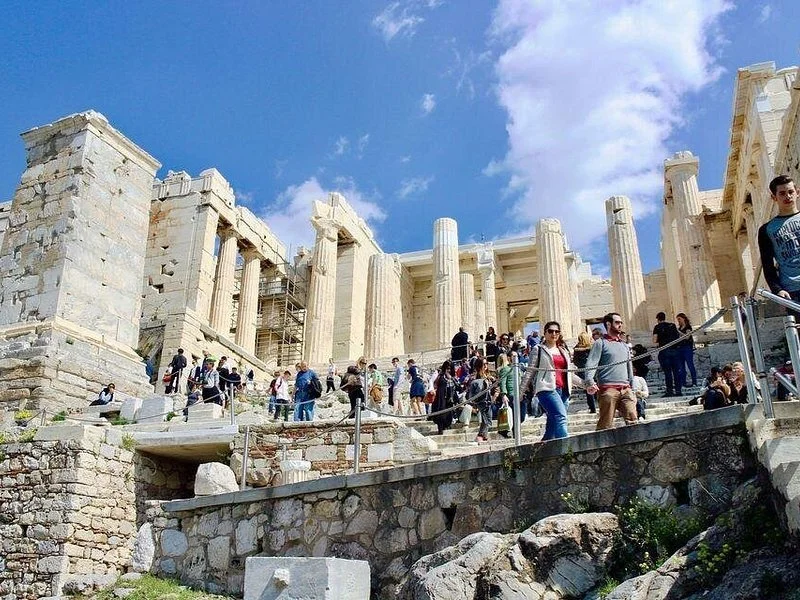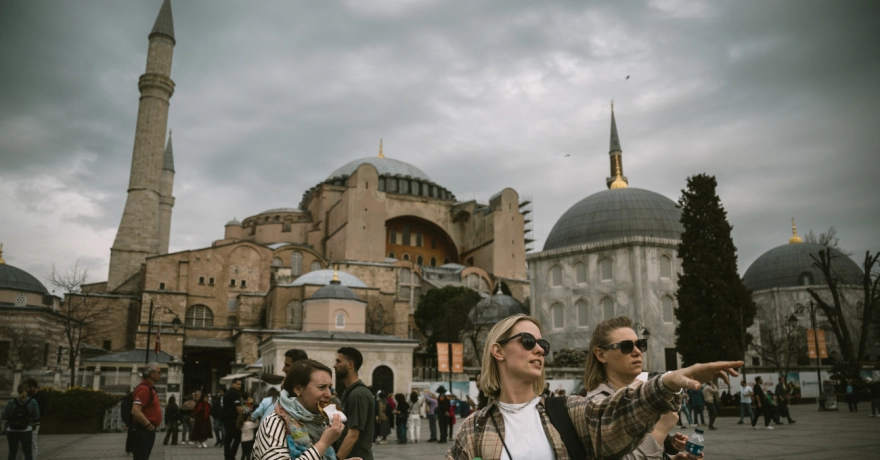With general admission to the Acropolis now set at €30, tickets for the Louvre reaching €22, and entry to Hagia Sophia priced at €25, visiting iconic cultural landmarks is becoming increasingly expensive. In fact, seeing the Mona Lisa alone—away from the usual crowds—at the Louvre will set you back a staggering €63.
A Global Surge in Admission Prices
Overtourism, inflation, and rising energy costs have significantly affected ticket prices at many of the world’s most visited historical sites and museums. In recent years, entrance fees have increased by 60% to 100% in some cases.
In Greece, the Ministry of Culture implemented a dynamic pricing model starting April 1, 2025, adjusting entrance fees based on visitor demand. As a result, the price of a basic ticket to the Acropolis has surged to €30.
The Louvre, for example, raised its general admission from €12 to €22, while Turkey’s Hagia Sophia now charges €25 for entry—drawing criticism from locals who accuse the Erdoğan administration of exploiting the site for tourism revenue.
Despite these rising costs, travelers continue to struggle to secure tickets, with online reservations selling out quickly and long queues forming at nearly every major site. The only way around this seems to be private guided tours—though they often double or even triple the total cost. Tourist passes can offer some relief, but they’re not universally accepted. Notably, Greece is one of the countries where such passes are not valid.
Ticket Prices in Greece
Two years ago, Greece’s Central Archaeological Council unanimously approved a new pricing system for the country’s museums and archaeological sites, as proposed by the Ministry of Culture. Alongside these changes came the removal of the former “combined ticket” system. As of April 1, 2025, new rates apply, with entry to high-demand sites like the Acropolis now fixed at €30.
According to the new tiered pricing structure:
Sites with over 200,000 annual visitors (e.g., Ancient Olympia, Delphi) now charge €20.
Sites receiving between 75,000 and 200,000 visitors: €15.
Sites with 15,000–75,000 visitors: €10.
Less-visited sites (under 15,000 visitors), such as the Byzantine Museum, charge €5.
Four state-run museums—National Archaeological Museum, Byzantine & Christian Museum, Heraklion Archaeological Museum, and the Museum of Byzantine Culture in Thessaloniki—now operate as Legal Entities of Public Law (NPDD), giving them autonomy over pricing, similar to the independently managed Acropolis Museum. This change allows them to control their finances, operate gift shops, and retain more revenue from ticket sales.
“The Acropolis Experience” – What’s Included
One downside to the new policy is the discontinuation of a universal pass that would cover multiple sites—a common offering in many other countries. Without it, tourists visiting various museums and landmarks must pay individual entrance fees, driving up costs significantly.
To address crowding, particularly during peak summer mornings, the Ministry of Culture has introduced dynamic pricing at the Acropolis based on time of day and demand. Officials hope this will ease congestion and reduce health risks during high temperatures.
For those seeking a more exclusive experience, private and VIP tours are now available, ranging from €145 to a jaw-dropping €5,000. Reports mention a Russian couple who booked a nighttime private tour of the Acropolis for that premium amount, with similar luxury packages available during full-moon evenings in July and August.
These custom tours, marketed under “The Acropolis Experience,” offer private access accompanied by expert archaeologists and include exclusive souvenirs. According to travel industry experts, such pricing is justified: a McKinsey study for the Greek Tourism Confederation found that Greece earned only €6 per visitor on average—well below the European average of €19.70.
While the end of the universal ticket is a concern for travel agents, new tourism packages are emerging that provide alternative benefits and discounts. Free admission still applies to all EU citizens under 25, and during the winter season, free entrance Sundays have increased from four to five days annually.
Louvre: €63 for a Solo Mona Lisa Experience
Paris: The Louvre Museum was the first to announce a major increase in its admission fee, with the ticket price soaring to €22 from the previous €12 — a move considered unthinkable by many French people, who are known for regularly visiting and cherishing their museums.
The Louvre—still the most visited museum in the world—has significantly raised its general admission fee from €12 to €22, citing rising operational costs. The move, introduced just months before the 2024 Olympics, sparked discontent among Parisians who regularly visit their national museums.
With over 35,000 exhibits spanning 9,000 years of history, the Louvre offers immersive tours and skip-the-line options. An audio tour package costs €33, while private guided tours are priced according to the number of galleries and time spent.
For those seeking the ultimate VIP experience, a €63 ticket grants solo access to the Mona Lisa room, far from the usual crowds. Visitors can also book combination packages that include extras like a Seine River cruise.
Rome: €99 for the Colosseum and the Vatican
Rome: The impressive monument of the Colosseum, home to the largest Roman arena ever built, has an entrance fee of €16 — a price that also includes access to the Roman Forum and the Palatine Hill.
It’s almost unthinkable to visit Rome without stopping at the Colosseum and the Vatican Museums, including the stunning St. Peter’s Basilica—home to Michelangelo’s Pietà—and the Sistine Chapel.
A full-access combo ticket costs €99, which might sound steep, but when broken down, makes sense: €40 for access to St. Peter’s Basilica, €74.90 for the Vatican Museums, and €16 for the Colosseum, which also includes the Roman Forum and Palatine Hill.
Hagia Sophia: Controversial €25 Entry
Despite President Erdoğan’s claims that converting Hagia Sophia into a mosque would ensure free access for all Turks, the site now charges €25 for general admission. A VIP ticket with a guided tour costs €47.50.
Local discontent has been growing, especially since Turkish citizens must queue with tourists to enter. Moreover, the popular €50 combined museum pass that applies to Istanbul’s top sites does not cover Hagia Sophia.
Barcelona: €33.80 for Sagrada Familia (Candle Not Included!)
Barcelona: A visit to the Sagrada Familia, Gaudí’s stunning church in Barcelona, costs €33.80.
Antoni Gaudí’s iconic Sagrada Familia is both a masterpiece of Catalan architecture and one of Europe’s most visited landmarks.
While the church’s exterior is stunning, the interior—featuring towering columns and colorful stained glass—is a must-see. However, understanding its intricate symbolism often requires an audio guide, which brings the ticket price to €33.80.
To avoid the notoriously long lines, visitors can book a skip-the-line guided tour for €47.
New York: A guided visit to the Metropolitan Museum of Art in New York costs $57.90 — and that’s the discounted price.
New York City: $57.90 to Enter The Met
In one of the world’s most expensive cities, it’s no surprise that ticket prices reflect the cost of living. The Metropolitan Museum of Art now charges $57.90 for full admission, including access to all current exhibitions and guided audio experiences.
As travel demand rebounds, visiting world-famous monuments and museums is becoming more exclusive—and more expensive. Whether you're gazing at ancient ruins in Athens, marveling at Renaissance art in Rome, or exploring modern wonders in New York, planning ahead and budgeting smartly are more essential than ever.
















